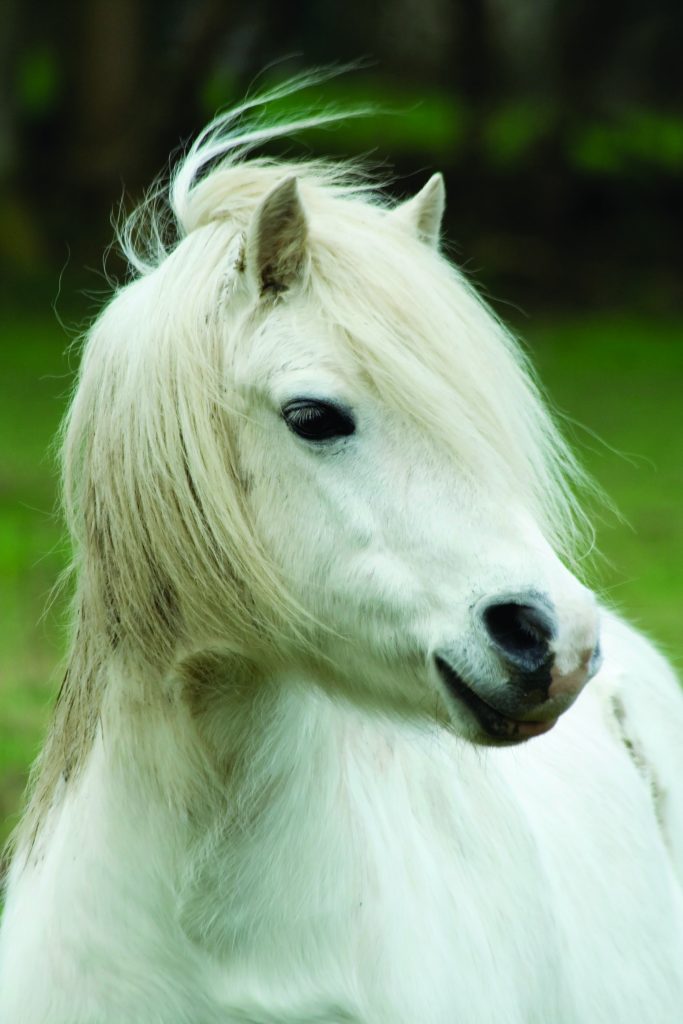
Laminitis Prone Horses & Ponies
If your horse suffers from, or is prone to laminitis, then the diet is one of the most important places to start.
Laminitis is an inflammatory condition of the laminae tissues which bond the hoof wall to the pedal bone in the equine foot. Pain and lameness is caused by a weakening of these tissues, the tearing of the laminae bond and in severe cases the rotation of the pedal bone. The condition itself is believed to be related to obesity and incorrect nutrition and one of the most important things you can do for a laminitis prone horse is to manage their weight, ideally keeping them to a condition score of between 2.5 -3 on a five point condition scale.
Those horses prone to laminitis will often have to endure a diet which minimises the calories from both sugar and starch they receive and avoid turnout on pasture, especially for a long period of time. However, it is important not to forget that the laminitis prone equine still requires vital vitamins and minerals in the diet and when feed and turnout is simply reduced, they often do not receive the nutrients they require to maintain health and well being.
Horslyx Balancers offers an ideal method of controlling calorie intake in horses and ponies prone to laminitis without compromising on valuable vitamins and minerals when fed on a restricted access basis only. The carefully chosen ingredients offer a balanced and palatable method of feeding the required nutrients to help with hooves, coat and skin and general wellbeing. Horslyx Balancers are also very low in starch (less than 0.5%) which is also important for equines prone to laminitis.
The rate of consumption of food is the key to safe feeding for overweight equines and those suffering from, or prone to laminitis. Horslyx Balancers are perfect for those prone to laminitis as licking takes time and patience and the intake of the product can also be easily restricted. Allowing them restricted access to Horslyx Balancers will give you peace of mind that they are still receiving a balanced diet without the risk of adding extra calories through concentrate feed. It also keeps those stabled or on box rest, more entertained and feeding in a more natural way. Remember, if a horse or pony is on restricted rations of forage we recommend restricted access to Horslyx to avoid over-consumption.
Introduce Horslyx Balancers gradually and provide your laminitis prone equine with access to the nutrient rich lick for 10 minutes a day to begin with. Once they have become more accustomed to the product this can be increased to 1-2hrs per day. By using Horslyx Balancers you can ensure your horse or pony maintains optimum health whilst on a restricted diet.
While excess starch and sugar consumption is a major factor in contributing towards laminitis, and contributes towards behavioural issues as well as weight gain, sugar is still a vital part of your horse’s diet, and they are efficient at digesting it as it is a part of their natural diet. Grass will typically be the largest source of sugar in the horse’s diet, typically 20% sugar, and at grass a 500kg horse can consume 50kg of fresh grass in one day, which is the equivalent of 2000g of sugar, or two whole bags, however even a single slice of typical hay (approximately 2kg) can provide around 200g of sugar.
While it is important to carefully manage the diet of a laminitis prone horse, eliminating all sugar is nigh on impossible, and would not be beneficial to the animal, as some naturally occurring sugar is required. It is more important to reduce the starch as much as possible and sugar to a reasonable level, and remember that a balanced diet is vitally important to provide the vitamins and minerals necessary to balance the deficiencies found in forage and grazing.
Horslyx Balancers provide these vitamins and minerals in a format where the recommended daily intake of 250g per 500kg horse will add just 82.5g of sugar to their diet and almost zero starch. While 82.5g of sugar may sound a lot, we must remember that the horse weighs approximately half a Tonne, so in human terms this is equivalent to an 8 stone person adding 1.5 teaspoons of sugar to their tea once a day!
The important aspect when managing the laminitis prone equine, is to look at all aspects of the management of the animal, from diet, to routine and exercise regime. The aim is to keep the horse or pony at a manageable weight with a regular exercise regime, keep it healthy with the addition of vitamins and minerals to balance the diet and provide ample forage to keep the gut healthy, keeping starch to a minimum and managing the intakes of sugar to avoid overloading the equine’s gut at any point.
For more information on sugar and Horslyx please click here.
